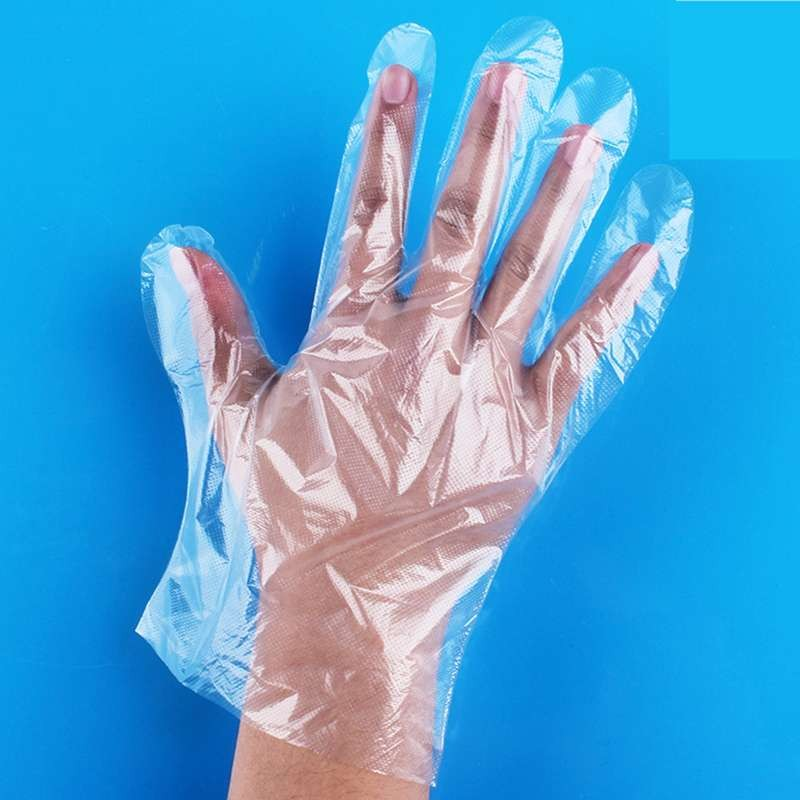2021/11/08 / By hqt / Tags:
An Ultimate Guide to use Transparent PE Glove: Major Types
Transparent PE Glove is the employee's “second skin”. They must not only protect hands from harmful production risks, but also provide comfort and convenience in work. On the PPE market there is a huge range of protective gloves from all kinds of materials. Consider the benefits of nitrile work gloves.

What is nitrile?
Nitrile is a synthetic rubber come from refined petroleum materials. The range of use of nitrile rubber is unusually wide - from the manufacture of car protectors to work gloves. Nitrile material appeared by Neil Tillitson and Luc de Becker in 1997. Since then, the production of nitrile gloves was started.
Why nitrile is common in the production of Transparent PE Glove?
Nitrile has an excellent balance of technical properties due to which it is common in the production of Transparent PE Glove. These properties are gives below:
- Excellent resistance to abrasion and mechanical stress
- Moreover, excellent contact with mineral oils, refined products, water, acids and alkalis of medium concentration
- Does not cause allergic reactions as it does not contain latex proteins
- Similarly, withstands a wide temperature range from -40 ° C to 130 ° C
- It is characterized by a high level of elasticity. Tensile limit exceeds 500%
- Furthermore, differs in high strength and durability. Nitrile gloves are about 15 times more durable than tarpaulin gloves.
- Similarly, it has a high mechanical memory - the gloves retain the shape of the hand after being removed for a long time.
What are the varieties of Transparent PE Glove?
First view
Disposable Transparent PE Glove is widely common in medical practice, including ophthalmology, dentistry, laboratory research, etc. In addition to the usual physical properties, nitrile gloves come by a high degree of tactile sensitivity, good for use during prolonged manipulations.
Second view
These gloves are work gloves that are made entirely of nitrile polymer. Nitrile is a good dielectric and antistatic agent. Due to their resistance to petrochemicals, excellent contact with oils, nitrile gloves are actively common in the petrochemical, aviation, and automotive industries.
Third kind
Nitrile coated cotton gloves. This group of Transparent PE Glove is made by immersing a cotton base in liquid nitrile polymer. Nitrile coated gloves are ideal for a variety of rough jobs in all weather conditions, as the cotton base provides comfort and heat protection.
What is the use of Transparent PE Glove in industry?
Due to the high protective properties of synthetic rubber, nitrile gloves are widely common in all industries. These gloves are the most common means of protection against harmful industrial factors.
Depending on the risks involved, gloves with a different set of protective properties are important. The protective properties come by the materials common for the coating of the gloves.
What are the varieties of Transparent PE Glove?
Consider the characteristics, advantages and features of the main coating materials for Transparent PE Glove.
- Latex gloves
Latex is a natural rubber. Furthermore, latex gloves come by good abrasion, puncture and tear resistance. They have excellent sensitivity and elasticity. They provide a high level of protection against weak acids, alcohols, ketones and water-based solutions.
Nitrile Transparent PE Glove
Nitrile - Acrylonitrile Butadiene is a synthetic rubber. Furthermore, nitrile gloves have excellent abrasion and cut resistance. Nitrile is 100% non-allergenic material. Similarly, it guarantees a high level of protection against oils, esters, petroleum products, solvents and animal fats. Nitrile gloves are the most versatile work gloves of their kind.
- PVC gloves
Polyvinyl chloride is a thermoplastic polymer. Provides excellent abrasion and tear resistance. Allergen-free material common in Transparent PE Glove is resistant to acids, alcohols and petroleum products.
- Foam nitrile coated gloves
Foamed nitrile is a synthetic rubber with a micro porous structure. It comes by a high level of mechanical protection along with shock absorption properties.
How not to get lost in a wide range and sea of trade offers?
Finding quality gloves at affordable prices is not easy. We recommend making a choice taking into account the following parameters:
- Mating class
- Number of threads
- Moreover, the material common
- Spraying type
Mating class for Transparent PE Glove
the knitting class is one of the determining factors when choosing gloves, because the thickness and density of the product depend on it. Knitted work gloves are made in standard 7, 10, 13 knitting classes.
7th grade is normal knitting density. These are quite thick gloves as compare to Transparent PE Glove.

Grade 10 is thinner yarn is common and at the same time the knitting density increases. Furthermore, it, allows maintaining high sensitivity of the hands when working with gloves. Knitted gloves of grade 10 are common for more delicate work in repair shops, assembly shops, laboratories, etc.
Grade 13 comes by a high knit density. Similarly, knitted work gloves of this class are thin and durable and it is important for high precision work. Hence, with an increase in class and density, the thickness of the glove decreases.
Number of threads in gloves
The number of threads in a yarn affects the strength and density of the Transparent PE Glove. The main terms for determining the density of gloves are "three-thread", "four-thread", "five-thread".
What type of material is common in the production of gloves?
Generally, gloves have different types depending on their function and material common in as:
- Cotton gloves
The basis of the knitted gloves is cotton thread. Cotton knitted gloves is common to protect hands when working with dry objects, when carrying out unloading and loading operations, when working with containers, etc.
Hands do not overheat or sweat as in case of Transparent PE Glove. In addition, the likelihood of allergic skin reactions completely excludes. Another advantage of cotton gloves is their durability.
Nylon and polyester gloves
To give the product extra strength, nylon or polyester threads add to the yarn during the production process. Similarly, these gloves are important for use in jobs that require precision action and a high level of tactile sensitivity of the hands.
PVC coated Transparent PE Glove
A PVC coating applies to the palm part and fingers of the gloves. Similarly, it contributes to a stronger adhesion of the glove to working surfaces and tools, making the grip of the hands reliable and strong. Cotton gloves with PVC, Transparent PE Glove, and nylon with PVC gloves are versatile and are common everywhere in all conditions.
When working with hot objects, it is not important to use PVC gloves. Furthermore, you should pay attention to hand protection with predominant cotton thread content of at least 70% in the composition.
Latex coated gloves
In this form, the entire palm and fingers of the glove covers with a continuous layer of latex resist ant to abrasion and punctures. Such a coating prevents the glove from getting wet, increases its durability and strength. Similarly, it gives the characteristics of oil and petrol resistance and resistance to many types of acids and solvents.


